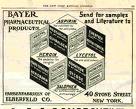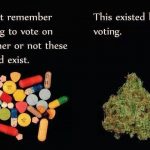Source: BBC News Magazine
24 January 2012
By Tom de Castella
Today it is taken for granted that governments will co-operate in the fight against the heroin and cocaine trade.
But 100 years ago, narcotics passed from country to country with minimal interference from the authorities. That all changed with the 1912 International Opium Convention, which committed countries to stopping the trade in opium, morphine and cocaine.
Then, as now, the US stood in the vanguard against narcotics. While the UK’s position is unequivocal today, a century ago it was an unenthusiastic signatory, says Mike Jay, author of Emperors of Dreams: Drugs in the Nineteenth Century.
The real concern a century ago was over alcohol, he argues. “There was a big debate over intoxication as there was concern about the heavy, heavy drinking culture of the 19th Century.”
Ambivalence towards opium was understandable. Britain had fought two wars in favour of the opium trade in the 19th Century, crushing Chinese efforts to restrict its importation.
And opium use was viewed in the mid-19th Century in a very different way from modern beliefs about drug use. It was possible to walk into a chemist and buy not only opium and cocaine, but even arsenic.
If you had been in a major British port in the 18th or 19th Century, you would have seen opium arriving alongside ordinary cargo. In February 1785 The Times listed opium from Smyrna (now Izmir) between oil from Leghorn (Livorno) and peas from Dantzic (Gdansk) in its roundup of goods unloaded at the port of London.
In the early 19th Century, travellers to Norfolk were warned to treat their pint in the pub with caution. Beer could be laced with opium to ward off the malaria that flourished in the Fens.
Opium, the dried residue of poppies, was usually consumed for its anaesthetic properties.
Queen Victoria’s coterie ordered opium from the royal apothecary. She is also believed to have taken cocaine gum with a young Winston Churchill. Prime Minister William Gladstone is said to have taken opium in tea or coffee before making important speeches.
In 1868 the Pharmacy Act brought in restrictions. In theory, it became tougher to get hold of opium – with the user having to provide a name and address and other details to the chemist. But it made little difference.
There was another side to the opium story. It was also smoked recreationally – a practice brought in by Chinese sailors who settled in the East End area of Limehouse. Opium dens became a much mythologised world, where aristocrats could stumble in and discover a cornucopia of vice.
“There were opium dens where one could buy oblivion, dens of horror where the memory of old sins could be destroyed by the madness of sins that were new,” wrote Oscar Wilde in The Picture of Dorian Gray.
But the fashion in drugs was changing from the “downer” of opium to the “upper” of cocaine – hence Arthur Conan Doyle making Sherlock Holmes a cocaine injector.
Marek Kohn, author of Dope Girls: The Birth of the British Drug Underground, argues that Holmes was typical of a view at the time that cocaine was for “brainy, highly-strung” people who needed constant stimulation. It was a “personal shortcoming” but not a sign of the depravity that drugs would later be associated with.
But in the US, cocaine came to be associated with street gangs, alongside racist propaganda that the drug sent black men insane and put white women at risk.
So these domestic concerns helped drive the international agreement in the form of the 1912 treaty. But while it tackled the trade, in the UK at least, the authorities were slow to crack down on individual users.
When World War I broke out, opium and cocaine were still legal drugs in Britain.
The turning point had come more than a year into the war, says Kohn. There was a fear that the drinking culture was harming the war effort. In 1915 the licensing laws were tightened.
The unintended consequence was to create the conditions for the first underground drug scene in Britain, says Kohn. It criminalised a small number of people in London’s theatre district and a scene developed in which opium, cocaine, sex and prostitution overlapped. With so many soldiers passing through London, it was little surprise that emergency regulation to ban drugs soon followed.
The fact that opium and cocaine-dealing were closely identified with the Chinese merely fanned the flames in a war-time atmosphere of general xenophobia, Kohn says.
“There was intense paranoia about foreign subversion, ostensibly by the Germans,” says Kohn. “And in the middle of this you have a drug panic in which the ‘outsider’ is central.”
In the years after the war, concern crystallised, driven by a media hungry for scandal. The stories would seem familiar to any modern reader.
A young actress dies from an overdose of cocaine. The inquest whips up a storm of intrigue and exposes the widespread use of drugs among her social circle.
This was the death of Billie Carleton in 1918. The actress had attended an opium party the night before her death and a coroner’s inquest found she had died of a cocaine overdose.
Her friend Reginald De Veulle was charged with manslaughter and conspiracy to supply a prohibited drug. He had bought the drug from a Scottish woman Ada and her Chinese husband Lau Ping You, in Limehouse.
De Veulle was acquitted of manslaughter but found guilty of supplying her with cocaine and sentenced to eight months in prison, Ada was sentenced to five months hard labour while Ping You was fined £10.
The emergency legislation brought in during WWI was made permanent in the Dangerous Drugs Act 1920.
Two years later came another notorious case of a young woman whom the media decided had been seduced and corrupted by a charismatic Chinese entrepreneur known as “Brilliant” Chang.
Freda Kempton, a young dancer, was found dead after taking an overdose of cocaine. At the inquest it emerged that she had been with Chang on the night she died. These two cases hardened feeling against the Chinese community and the sense that they were using drugs to ensnare innocent white women.
The media presented her as a vulnerable ingenue, says Kohn. “There was already a moral panic associated with drugs but it was prostitutes who weren’t seen as sympathetic,” he says. “But Billie Carleton was seen as different, she was portrayed as this waif-like figure when she was nothing of the sort.”
The cases prompted many to become aware of cocaine as a serious menace for young innocent women. But almost as soon as panic reached its peak with the Kempton case it dissipated.
In reality, there was no “drug scene” in Britain back then, says Jay. What existed was confined to a few streets in Soho and a handful of dealers in Limehouse.
And once the drug laws came in banning cocaine and opium, the problem was easily contained by the police.
“Victorian Britain had been awash with opium but you wouldn’t smoke it in a den, you’d get it from the chemist as a gloopy liquid. The opium dens were largely fictional constructs encouraged by stories like Sherlock Holmes and the writings of Oscar Wilde,” Jay notes.
Today, when the efficacy of anti-drug measures is constantly debated, it seems curious that the 1912 treaty was an effective measure. Domestically, in the UK, the police had the upper hand.
The big changes in the West’s attitude to drugs came after World War II, Jay argues.
“The baby boomers were the first generation in history to become real global consumers. People were suddenly going to Morocco to smoke hash, or hitching with lorry drivers who were using amphetamines.”
So the floodgates opened. Where once the authorities were fighting relatively small groups of offenders in a tiny drugs subculture, now they must fight millions of users and powerful international cartels.
The death of Billie Carleton
Rising star of musical theatre during WWI
Caused stir at Victory Ball in London’s Albert Hall, 27 November 1918, for daring costume and friendship with notorious cross-dressing designer Reginald De Veulle
Found dead in her Savoy Hotel suite next day, a box of cocaine at her bedside
Inquest suggested death by “cocaine poisoning” – De Veulle convicted of supplying the drugs
Newspaper reports of his trial breathlessly reported on Billie’s fast life and untimely death
Noel Coward drew on her story for The Vortex, his first hit play in 1924
Affronted Lord Chamberlain wanted to ban the play as “frivolous and degenerate”
Statements in the war on drugs
1912 Hague International Opium Convention stated that: “The contracting Powers shall use their best endeavours to control, or to cause to be controlled, all persons manufacturing, importing, selling, distributing, and exporting morphine, cocaine, and their respective salts, as well as the buildings in which these persons carry such an industry or trade.”
1961 Single Convention on Narcotic Drugs added another drug to the roll-call, stating that signatories “shall adopt such measures as may be necessary to prevent the misuse of, and illicit traffic in, the leaves of the cannabis plant”.
UN Convention Against Illicit Traffic in Narcotic Drugs and Psychotropic Substances of 1988 warned of “the steadily increasing inroads into various social groups made by illicit traffic in narcotic drugs… [and] that children are used in many parts of the world as an illicit drug consumers market and for purposes of illicit production, distribution and trade in narcotic drugs and psychotropic substances, which entails a danger of incalculable gravity”.
For medicinal purposes
Queen Victoria’s court frequently ordered opium from the royal apothecary at Balmoral
It was legal in England at the time, and used to treat coughs and other ailments
Often taken in the form of laudanum – a tincture of opium and alcohol




 Creative Commons Attribution
Creative Commons Attribution